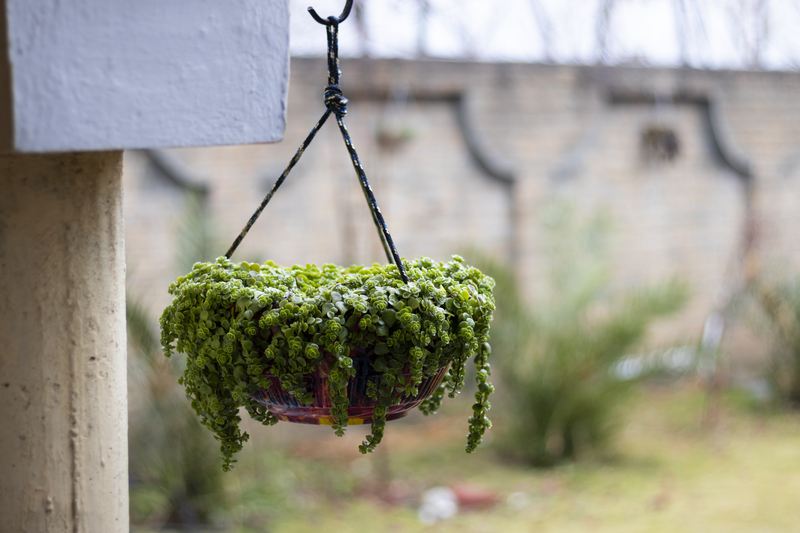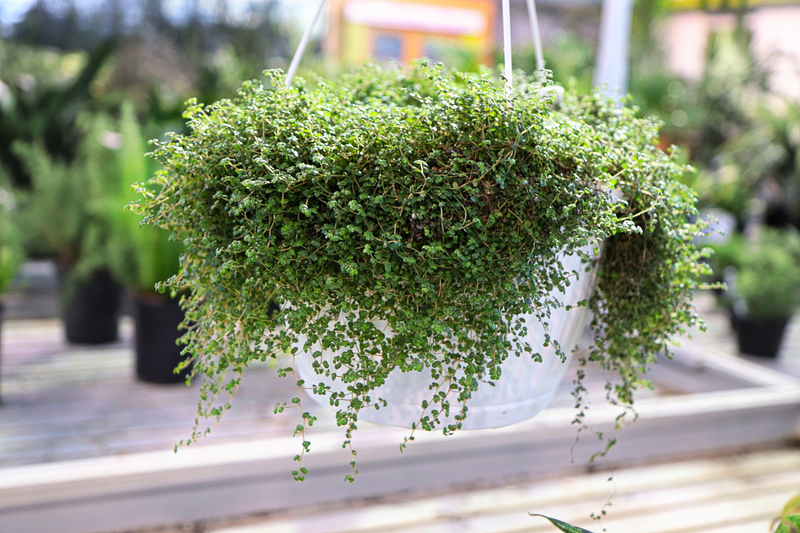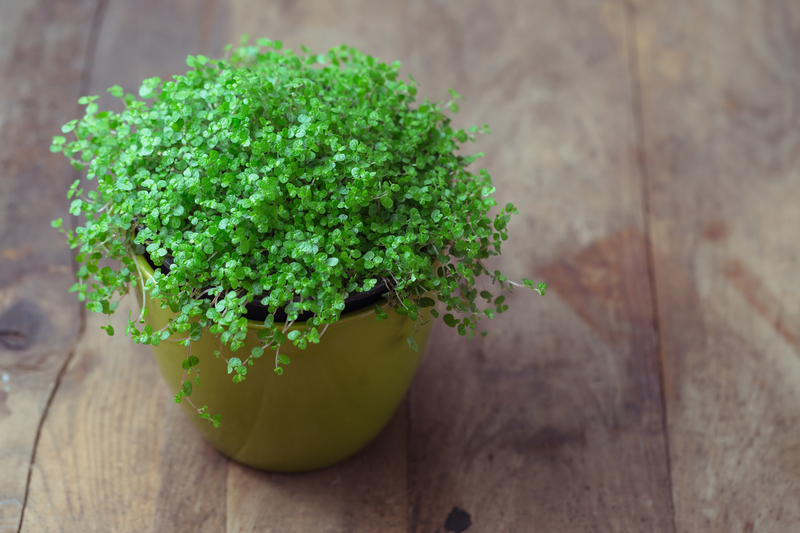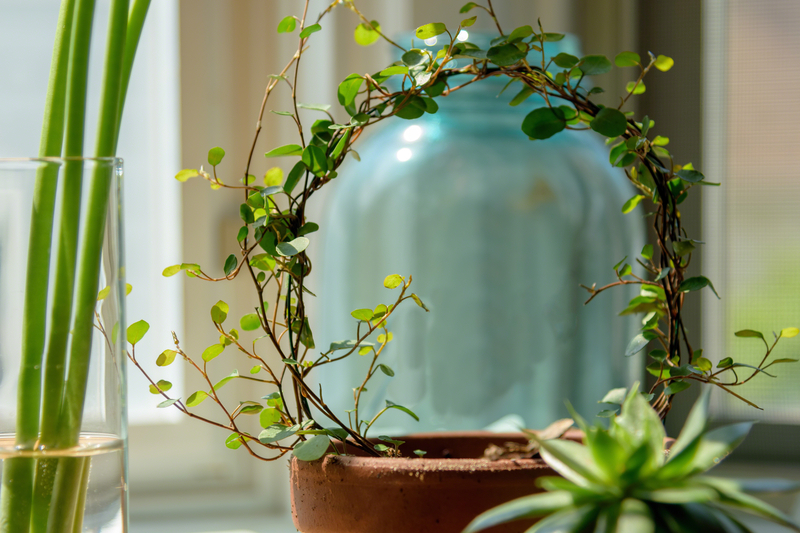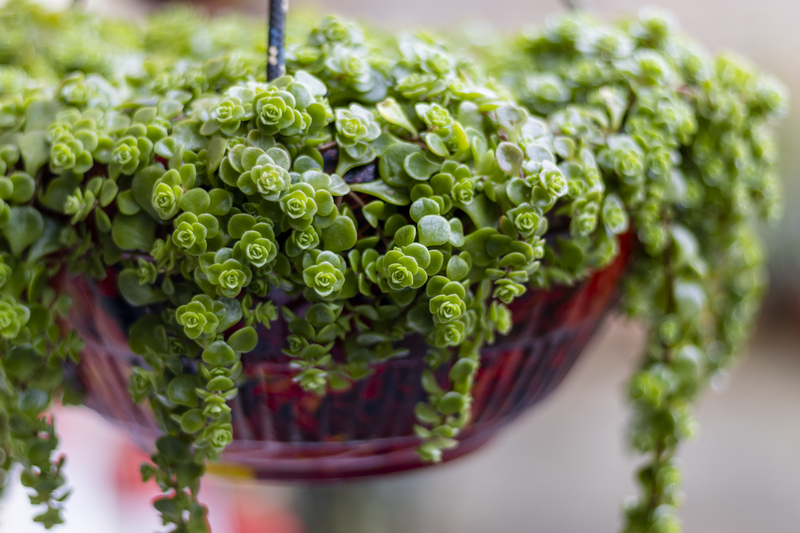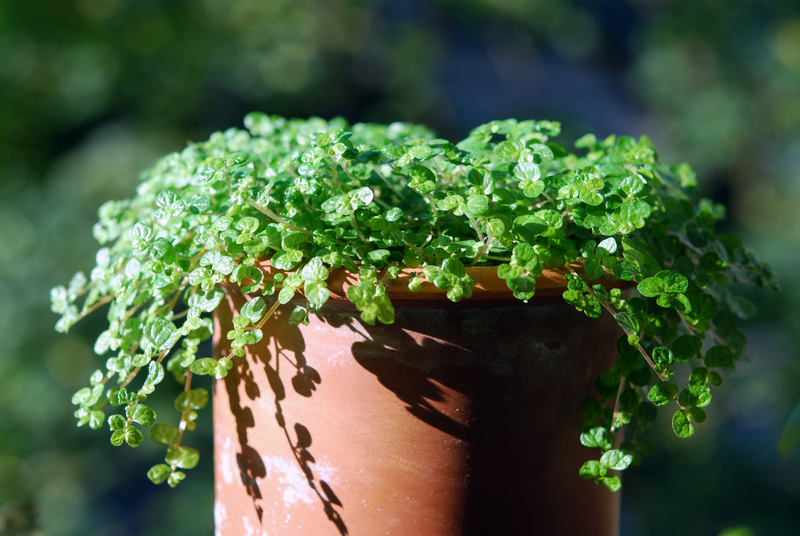A baby tears plant is one of the most popular plants to put in terrariums or place in hanging baskets in your home. Since it is a low-growing plant, it won’t take up too much space wherever you place it. The bright green leaves and mossy bushy look help it stand out from most other plants. Not only does the plant look great, but it is relatively easy to care for regularly. Here is the complete breakdown of Baby Tears Plant Care.
Common Names
- Helxine Soleirolii
- Soleirolia soleirolii
- Baby Tears
- Angel’s Tears
- Bits and Pieces Plant
- Irish Moss
- Corsican Curse
- Mind-Your-Own Business
- Peace in the Home
- Corsican Creeper
What Soil Works Best for a Baby Tears Plant?
Regular potting soil with peat moss and perlite works well for a Baby Tears Plant. You want to use soil that drains well, along with keeping this plant in a container with drainage holes. Drainage holes and well-draining soil help reduce the risk of root rot, which is a common problem for this plant.
Can you use a Houseplant Fertilizer?
A 20-20-20 fertilizer works best for a Baby Tears Plant. Consider using half as much of the fertilizer during the growing season for the plant if this is your first time giving it extra nutrients. The growing season is in the spring and summer for this plant.
After you give the plant some fertilizer, you should also provide the plant with some water.
How Much Sunlight Does a Baby Tears Plant Need?
Indirect light works best for a baby tears plant. Be careful about leaving this plant in front of direct sunlight because that can burn the leaves. If the plant is near a west-facing window, you should put a curtain in front of the window to reduce the direct sun on it.
What Temperature Works Best for a Baby Tears Plant?
A baby tears plant enjoys moderately warm temperatures of 55-70 degrees Fahrenheit. Keeping this plant in your home will be sufficient because the temperature won’t fluctuate too much from what the plant enjoys.
If you keep this plant outside, like in a hanging basket on your porch, it can tolerate slightly cold temperatures. However, once frost appears on the grass, you will want to move this plant inside.
What Humidity Requirements Does a Baby Tears Plant Need?
A humidity level of over 60% works best for a Baby Tears Plant. To give this plant more humidity, you can place it in a terrarium with good air circulation in a bathroom with a shower. Running a hot shower will create a humid climate that this plant will enjoy. Also, since this plant does fine in low light, you don’t need to worry if the bathroom only has a small window that gets indirect sunlight.
Another option to increase the humidity for the plant is regularly mist the plant. Misting the plant helps raise the humidity level around it a bit. In addition to that, you can place this plant next to a humidifier. However, don’t let the humidifier run for too long next to the plant because that can cause root rot.
How Often Should You Water a Baby Tears Plant?
During the growing season in the spring and summer, you want to water this plant 1-2 times a week. Moist soil works best for this plant to grow strong and healthy. If you notice wilting, that means that you need to increase the watering schedule for this plant.
You can reduce your watering schedule to 1-2 times a month when the winter hits. If you overwater the plant, especially in the winter, you can run into root rot issues. Root rot occurs when the plant can’t absorb the excess water at the bottom of the pot, so it begins to rot and form fungus.
What Size Does a Corsican Creeper Grow to Typically?
A Corsican Creeper tends to grow to about a foot tall.
Most Common Bugs
Aphids, mealybugs, scale, and mites are all common bugs with this plant. If you notice these bugs on the plant, you can remove them with a spray bottle consisting of water, insecticide, and soap.
Most Common Diseases
Root rot is a common problem due to overwatering and having a container that doesn’t have good drainage holes. If you run into root rot, you will need to remove the plant from the current soil. Next, you need to cut away any dead roots and place the plant back into a fresh dry potting mix.
Can you Prune a Baby Tears Plant?
Pruning a baby tears plant is a wise idea if you want to keep a specific look. To prune, you want to cut off any excess parts of the plant that look leggy. If the plant becomes too large for the hanging basket or terrarium, you can move pruning into propagation if you want to add more of these plants around your home.
Can you Propagate a Baby Tears Plant?
Here are the propagation steps for a Baby Tears Plant.
- Split the mother plant in half through the root ball. You can use your hands for this since the plant is delicate.
- Place each new half into its own section of potting mix.
- Give each new plant water to keep the soil around it moist.
- If possible, place a lid over the container to create high humidity around the new plants.
- After a week or so, you can check if the new plants are rooted in the soil. If that is the case, you can transplant them into a hanging basket, new container, or terrarium.
Can you Repot a Baby Tears Plant?
It is best to repot a Baby Tears plant when it starts to outgrow the current container. For repotting, you want to place the plant into a container that is 1-2 inches bigger in diameter than the previous home. Placing the plant in a slightly bigger container helps it grow into its new environment without feeling constricted, as it did in the last container.
Where Does the Baby Tears Plant Originate from Initially?
A baby tears plant originates from the Mediterranean islands of Corsica and Sardinia.
What USDA Zone Works Best?
The USDA Zones that work best for an Angel’s Tear’s pant is 9-11.
Is it Toxic?
A baby tears plant is non-toxic.
When Does this Plant Bloom?
A baby tears plant can grow tiny white flowers against its green foliage during the late spring. However, the flowers will be small, and it isn’t easy to get them to bloom when they are indoors.
Conclusion: How to Take Care of a Baby Tears Plant?
In summary, a baby tears pant is a relatively low-maintenance plant for anyone to own. It doesn’t need to be in a hot climate and prefers the soil to be moist, never soggy. The tiny leaves of the plant give off a bushy look too. Not only is the plant easy to care for, but it looks perfect for a hanging basket on the porch of your home.
Similar Posts:
Philodendron Ring of Fire Plant Care

